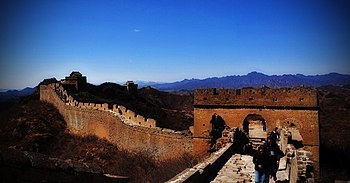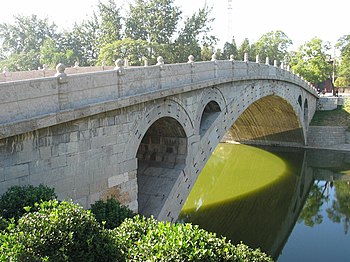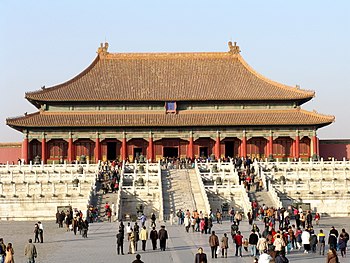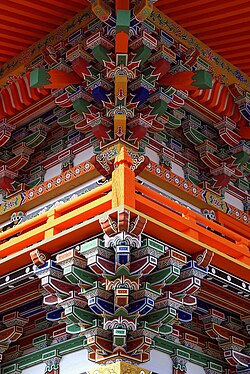Architecture in China and the Far East
From WikiEducator
| Art Appreciation and Techniques (#ART100) | |
|---|---|
| Art and architecture | Overview | Introduction | Methods and materials | Architecture in China and the Far East | Cross-cultural influences | Architecture and the Industrial Revolution | Modern architecture | Postmodern and contemporary architecture | Green architecture | Summary |
Chinese architecture refers to a style of architecture that has taken shape in East Asia over many centuries. The structural principles of traditional Chinese architecture have remained largely unchanged. Chinese architectural (and aesthetic) design is based on symmetry, a general emphasis on the horizontal and site layouts that reflect a hierarchy of importance. These considerations result in formal and stylistic differences in comparison to the West, and display alternatives in design. The Chinese have used stone, brick and wood for centuries. The Great Wall, begun in the 5th century BCE, was intended to keep nomadic invaders out of Northern China. The stone wall covers 5500 miles in its entirety. The rigid material takes on a more flexible appearance as it conforms to the contours of the landscape surrounding it. Notice the use of arches in the towers.
| “ | This stone bridge over the Jiao River is the result of the work of the Sui engineer Li Chun. Its construction is indeed unusual, and no one knows on what principle he made it. But let us observe his marvelous use of stonework. Its convexity is so smooth, and the wedge-shaped stones fit together so perfectly... How lofty is the flying-arch! How large is the opening, yet without piers! Precise indeed are the cross-bondings and joints between the stones, masonry blocks delicately interlocking like mill wheels, or like the walls of wells; a hundred forms (organized into) one. And besides the mortar in the crevices there are slender-waist iron cramps to bind the stones together. The four small arches inserted, on either side two, break the anger of the roaring floods, and protect the bridge mightily. Such a masterwork could never have been achieved if this man had not applied his genius to the building of a work which would last for centuries to come.[1] | ” |
Decoration is implicit in Chinese architecture. Bright colors and intricate designs dominate many traditional buildings and enhance the look of exposed timbers. The Sagami Temple in Japan (at right) uses elaborate decoration to intensify the visual effect of a complex corner structure of brackets and overhangs.
Notes
- ↑ Needham, Joseph. The Shorter Science and Civilization in China. Cambridge University Press, 1994. ISBN 0521292867. Pages 145-147.



